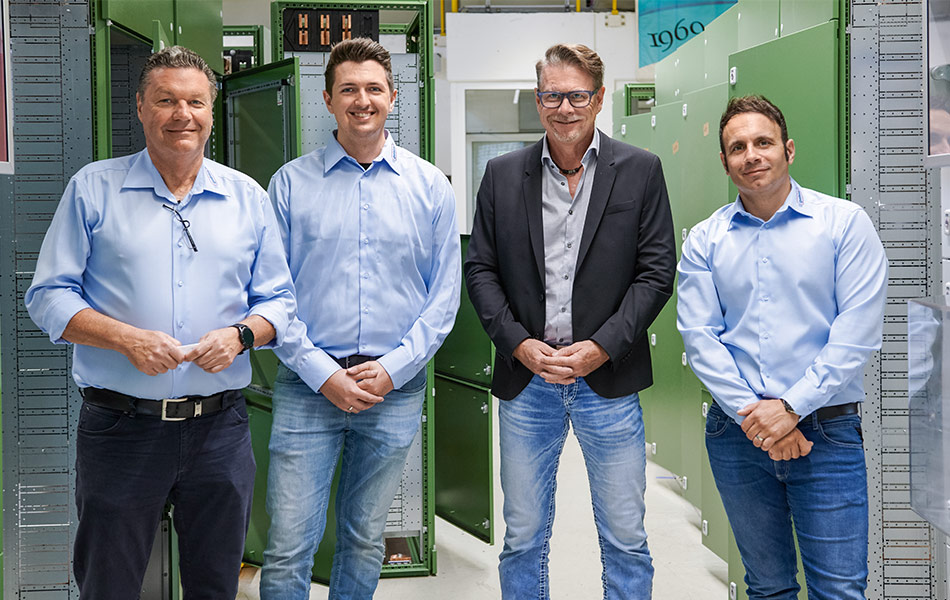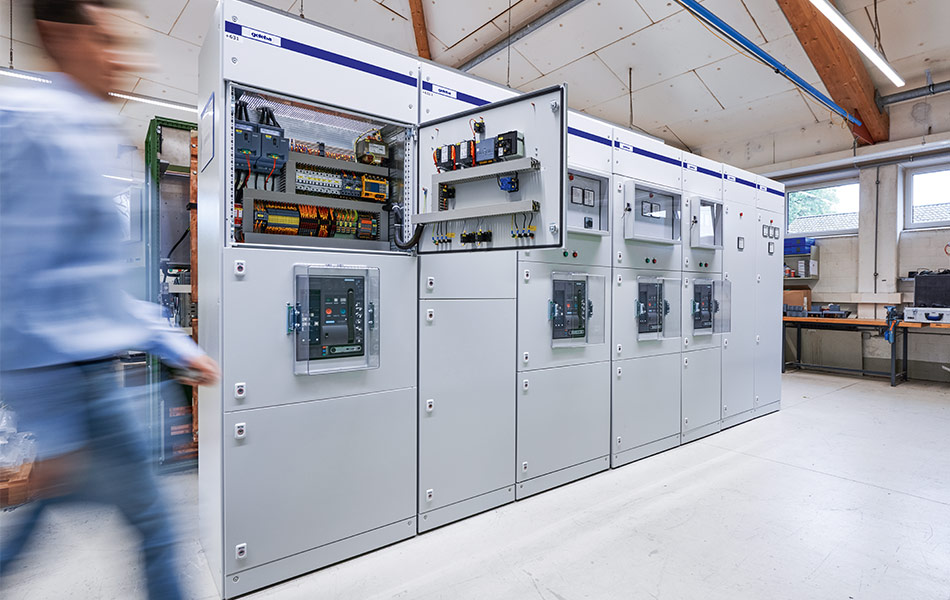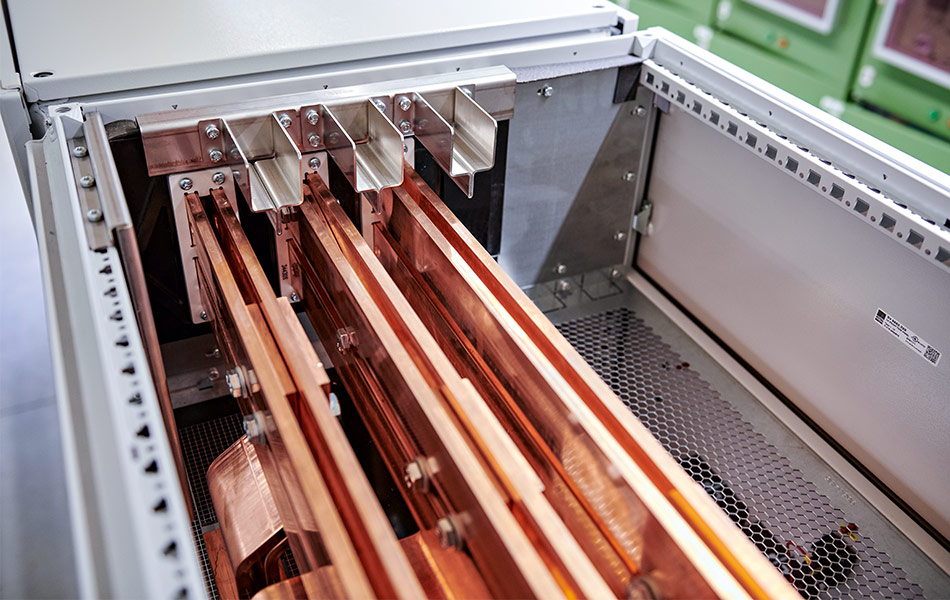Text Dr. Jörg Lantzsch, Hans-Robert Koch ––– Photography
Our customers are increasingly asking for low-voltage switchgear with arc fault protection,” says Kevin Pelka, Project Manager at gefeba, a one-stop shop for turnkey automation technology and electrical equipment that is based in Gladbeck, in Germany’s industrial Ruhr region. The company is well aware of this safety trend and is currently working on switchgear of this kind for thyssenkrupp Steel Europe. Like gefeba, many switchgear manufacturers have been rethinking their approach over the past few years. After all, the availability of production plants is becoming increasingly important, and arc fault protection in the low-voltage supply plays an important part in this regard.
THE CHALLENGE OF CLASS B ARC FAULT PROTECTION
“Developing switchgear using a Form 4b design with class B arc fault protection was new territory for us,” says Pelka, recalling the enquiry that came in from thyssenkrupp Steel Europe. DIN EN 61439-2 stipulates that class B arc fault protection must contain an arc fault within a defined area inside the switchgear (see box). “Customers primarily ask for this so that the damage caused by an accident does not destroy the entire switchgear,” explains the Project Manager. To meet this challenge, the company sought the help of Rittal.
gefeba opted to use the VX25 Ri4Power system for its new low-voltage switchgear. “In addition to the Form separation and arc fault protection offered by the system, there was another crucial advantage – it has enabled us to keep to our customer’s very tight schedule,” explains the 29-year-old Project Manager. The switchgear is intended for use in a blast furnace at thyssenkrupp Steel Europe’s site in Duisburg, where it will supply power for Cowper stoves, booster pumps and assigning repair tasks. The upgrade can only take place during the window set aside for overhauling the blast furnace. “It’s precisely scheduled and will take around two months,” says Pelka. Fast delivery and a system that can be installed quickly and easily were therefore essential.
COLLABORATIVE SUCCESS
“Without the assistance from Rittal, there would be no chance of us delivering the system on time,” says Pelka. During planning work at Rittal, the low-voltage switchgear was designed in line with requirements using “Rittal Power Engineering” software. This meant gefeba could very quickly get started on the details of electrical planning. “It is important that the timing is right, particularly for projects with such tight timescales.”
One of the major challenges in this situation is the delivery lead times for the various components: “We always have to think ahead and, for example, order the circuit breakers very early as they have a long delivery lead time.” That is precisely why customers appreciate the short delivery times Rittal offers, as Pelka points out: “This is particularly important for us, as the mechanical aspects, including the enclosures, always have to be ready before the electrical side of things.”
Support was provided by the internal sales team for power distribution technology at Rittal and included on-site training and explanations of important installation details. Rittal supplied a first section of the system partially assembled. “This service has made our work much easier, as we have been able to use it as a guide for the other parts of the system,” explains the Project Manager. The fact that many parts of the switchgear were delivered ready for installation has also helped keep the project on schedule. For example, the copper busbars for the circuit breaker connections were already bent to fit. Rittal was also able to benefit from gefeba’s more than 50 years of experience building complex switchgear and incorporate some improvements into its production processes.
ARC FLASH KIT WITH SACRIFICIAL ANODES
gefeba has designed a total of six identical switchgear units with a rated current of 2,500 A each. A group of four units is connected together via coupling switches, as are the remaining two units, thus ensuring that if there is a fault in one part of the system, the equipment can be powered from the neighbouring part of the system. This redundancy is essential to the continuous operation of the blast furnace. To achieve the required class B arc fault protection, the arc flash kit for the Ri4Power system has been installed in all the sections produced in Form separation 4b and 2b.
The kit includes seals that are installed on the busbars where adjacent sections meet, thus preventing an arc from travelling along the busbars into the next section. Sacrificial anodes are also installed, drawing the arc away from the system and extinguishing it, thus preventing vital parts of the system from being destroyed. “We have also included another feature as advised by Rittal,” explains Pelka. “The circuit breakers protruding from the door are insulated with special plastic covers that can be opened to insert and remove the circuit breakers. Due to arc faults, switching on and off is carried out via the push button installed in the enclosure door directly above.”
GEFEBA INSPIRES INNOVATION
If, as in the project for thyssenkrupp Steel Europe, low-voltage switchgear is equipped with class B arc fault protection, only one or two enclosures are affected by any damage and the process can continue at least in emergency mode. gefeba has been a catalyst in the development of the arc flash kit, making a valuable contribution through its long-standing representation on the Customer Advisory Board at Rittal.
“We are delighted at how well this project has gone with the support from Rittal,” says Pelka, “because there was no other supplier who could have offered us this.”




